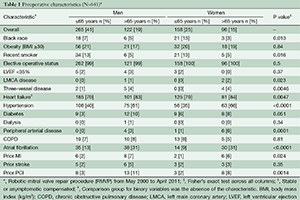Conditional long-term survival following minimally invasive robotic mitral valve repair: a health services perspective
Abstract
Background: Conditional survival is defined as the probability of surviving an additional number of years beyond that already survived. The aim of this study was to compute conditional survival in patients who received a robotically assisted, minimally invasive mitral valve repair procedure (RMVP).
Methods: Patients who received RMVP with annuloplasty band from May 2000 through April 2011 were included. A 5- and 10-year conditional survival model was computed using a multivariable product-limit method.
Results: Non-smoking men (≤65 years) who presented in sinus rhythm had a 96% probability of surviving at least 10 years if they survived their first year following surgery. In contrast, recent female smokers (>65 years) with preoperative atrial fibrillation only had an 11% probability of surviving beyond 10 years if alive after one year post-surgery.
Conclusions: In the context of an increasingly managed healthcare environment, conditional survival provides useful information for patients needing to make important treatment decisions, physicians seeking to select patients most likely to benefit long-term following RMVP, and hospital administrators needing to comparatively assess the life-course economic value of high-tech surgical procedures.
Cover






